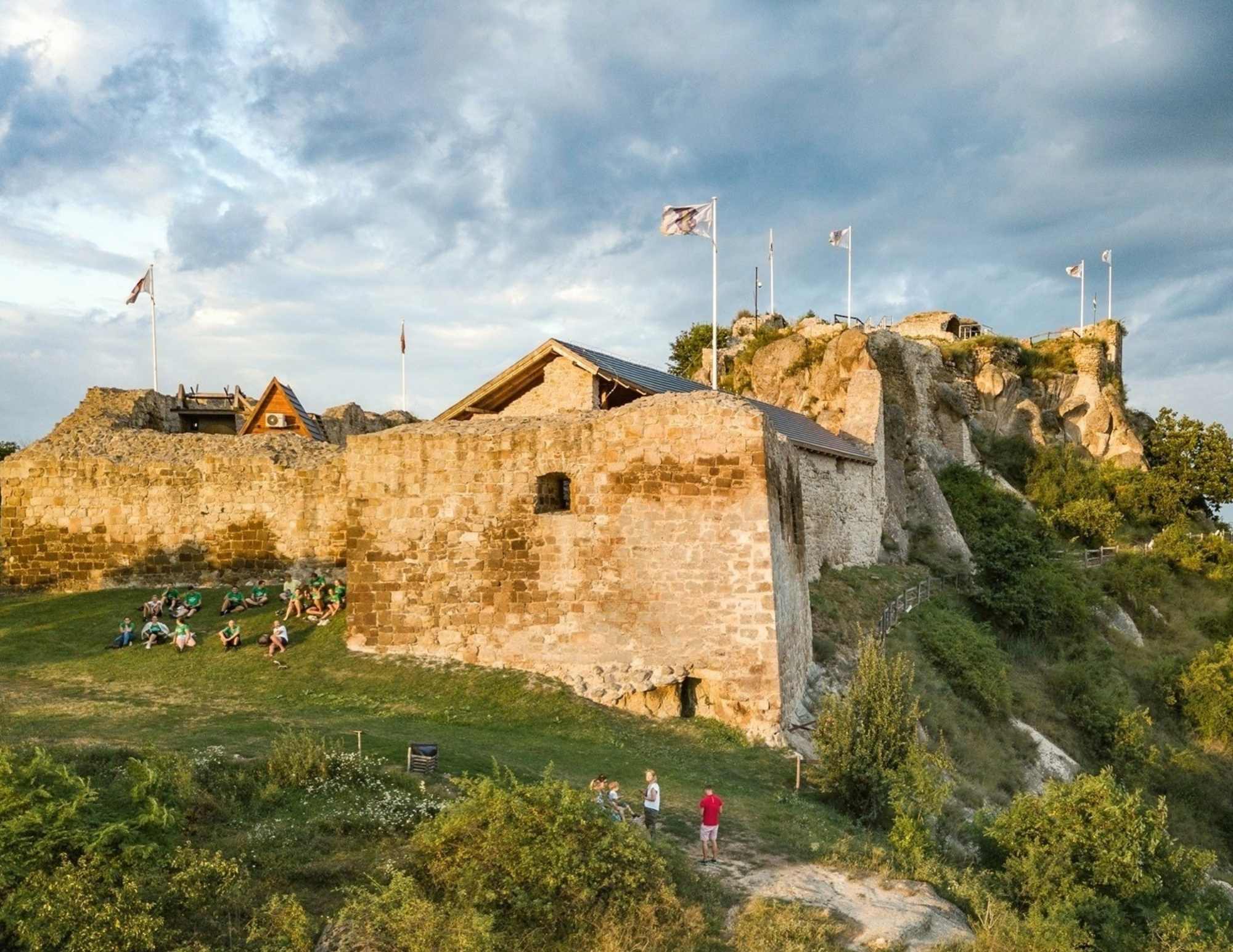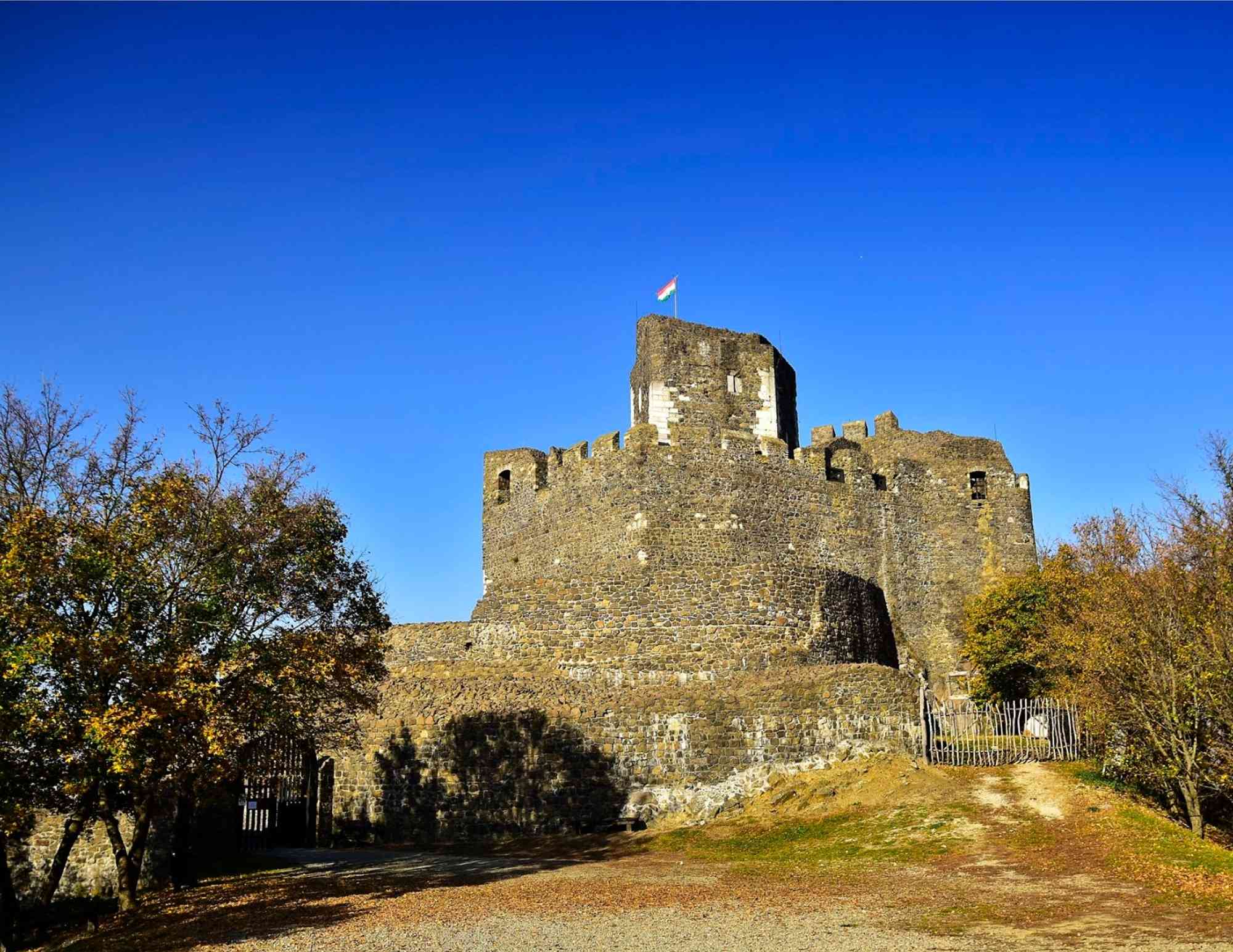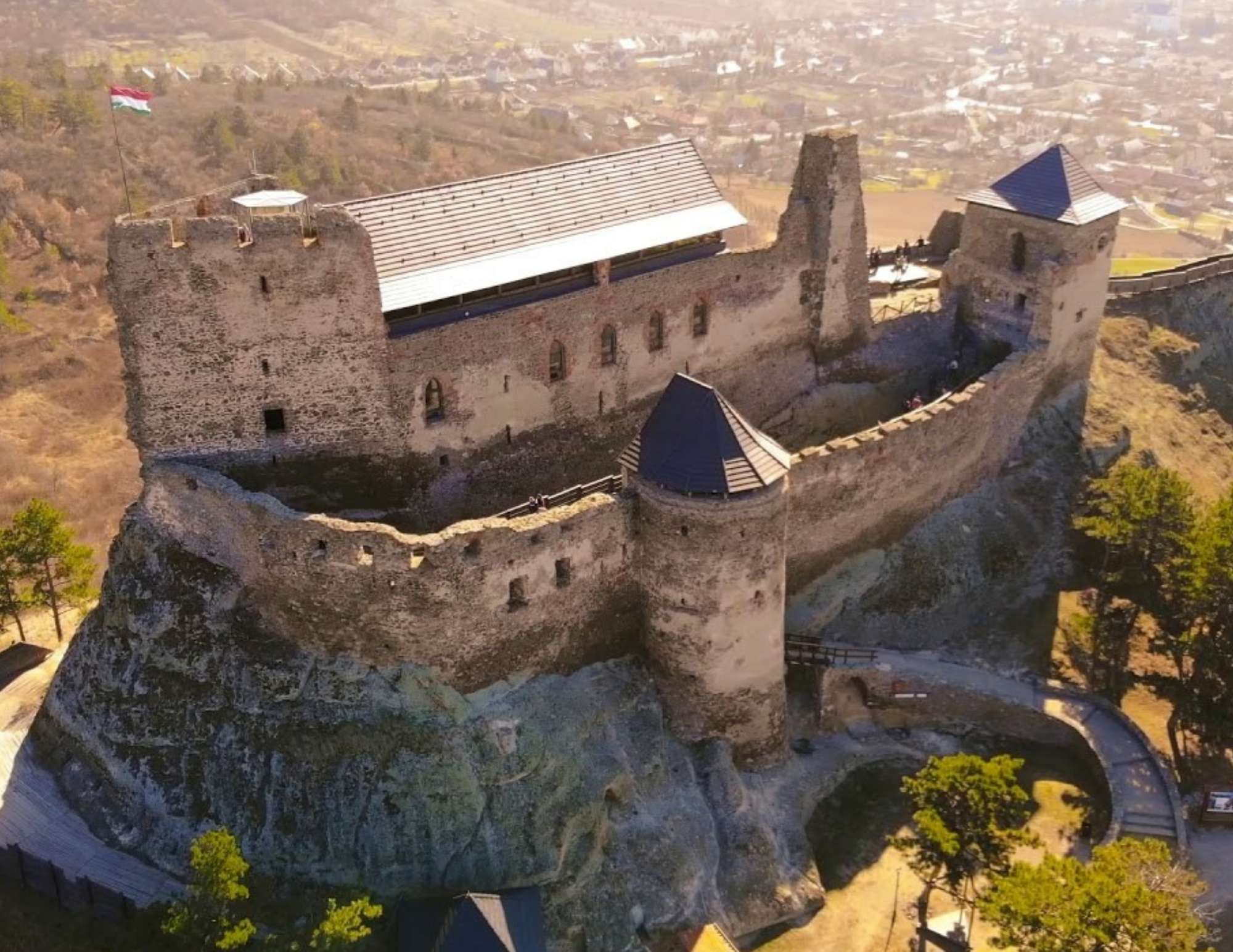Have you heard about the mysterious legends of these Hungarian fortresses?

Hungary boasts a number of spectacular castles and fortresses that still remained in relatively good condition despite the weathered centuries and bloody battles. Even though most of them stand seemingly uninhabited, there are a few ghostly creatures that still call these ancient relics home. So the next time you are visiting one of these medieval Hungarian fortresses and suddenly get a weird feeling that you are not alone, you may just be right.. Scroll at your own risk!
Siroki Fortress – haunted by the red demon
Tucked in the eastern side of the Mátra mountain range in northern Hungary, the Siroki Fortress towers over the region from 296 meters high on the top of a volcanic peak. The history of this enigmatic place stretches back centuries before the era of the Árpád dynasty as it already functioned as an important stronghold during the time of the Avars, a 6th-century nomadic tribe often associated with the Huns. Sadly, the Turkish occupation took a toll on the once-powerful fortress and only its battle-scarred ruins remained to witness what it used to look like.
There are many ghost stories linked to the building among which the most famous is the story of Gizella Kompolt, also known as the red demon. As legend has it, the fortress was once governed by an eccentric baroness who inherited it after his father’s death. Gizella had fiery red hair and her beauty made every man go weak on their knees. For a long time, she did not show any interest in marrying someone. She was rarely seen smiling and preferred playing with guns instead of cultivating romantic fantasies. However, faith had interfered and she tragically fell in love in the end.
One night, 7 brave warriors stopped by the fortress and asked for shelter; one of them instantly captured the beautiful baroness’s heart but the others also set their eyes on the attractive redhead. The 6 lovestruck soldiers eventually decided to battle for Gizella’s hand. Her love interest, however, sadly lost his life early on in the fight for which she took bloody revenge: she plunged her sword into the 6 other warriors and then threw herself off the highest peak into the deep. To this day, her spirit still roams the dark corridors and passages of the fortress. As well as her sighting, her grievous inconsolable moans are also often heard throughout the fortress, especially in the wee hours. On frequent occasions, locals have also spotted the 7 warriors accompanying Gizella on her nightly walks.

Read more: The scariest Hungarian tradition continues this year
Hollókő Fortress – built by the devil’s sons
History and legend are inseparable at this UNESCO World Heritage Site in Hollókő. Nestled behind the Cserhát mountain range, the abandoned fortress has been towering over the tiny quaint village since the 13th century. Its serene atmosphere is only interrupted by tourists, otherwise, the ruins stand still and silent. However, the sleepy ambiance of the fortress seems to have made it difficult for one former resident to leave. According to the folktale, András Kacsics, the lord of the neighbouring settlement Pusztahegy, set his eyes on a stunning young woman from the village whose ravishing beauty was known in countries near and far.
The only issue was that the woman was already married to someone else so he decided to kidnap her and lock her in one of the dim cells of his castle that was being built at the time. To the lord’s great misfortune, the woman had a secret: she was raised by a crafty old witch, who immediately rushed to her rescue. The witch made a pact with her cousin, the devil, and at his command, the devil’s sons, in the image of ravens, came to the fortress under construction every night to steal the stones one after the other. The ravens carried the stones in their beaks to a nearby hill where they built a new fortess – now known as Hollókő which stems from the two words holló (raven) and kő (stone).
To his distress, the lord finally had to release his gorgeous hostage who later became the owner of the Hollókő Fortress. Afterward, she was always followed by the ravens who faithfully watched over every step she took. Women of the village are said to be the descendants of this enchanting medieval figure. Locals also swear that part of her witchcraft had been passed down to the female residents who occasionally still engage in devilish practices if an unwary male traveler enters their threshold.
The only misfortunate character of this story, András Kacsics, however, still has not found his peace. His restless spirit wanders around the sturdy walls of the fortress looking for his lost love. Some villagers passing the fortress at dead of night have reported spectral groans that make your bones shiver, while others have also seen a strange figure dressed in wary old-fashioned clothes gazing into the distance from the tower.

Read more: Six castles to explore in Northern-Hungary
Boldogkő Fortress – home of the 7 fairies
After these spooky stories, we thought to light up the mood with another tale that actually has a happy ending. The Zemplén mountain range boasts many iconic Hungarian fortresses, but the most stunning one is found in Boldogkő. The fortress of Boldogkő has changed owners several times during the centuries, besides it serves as the location of an enthralling tale according to which the place was once inhabited by fairies. The story goes back to the time of the Tatar invasion, that is when written references in ancient manuscripts first mentioned this formidable stronghold, around 1282. The Tatars were Turkic nomads who became part of the armies of the ruthless Mongol conqueror, Genghis Khan.
As the legend goes, Béla IV, King of Hungary and Croatia between 1235 and 1270, was fleeing from the Tatars after his lost battle. He had no place to find shelter and the enemy was already around the corner when a master fruit dryer, called Bodó, came to his rescue and hid the king at his cellar. When the enemy knocked at the door, the old man pretended to be deaf and clueless, giving gibberish answers when the Tatars quizzed him about the king’s whereabouts. Finally, they realised that all their attempts were in vain and they continued their search in the next village.
Years after, when the Tatar invasion had finally ended, Bodó learned that the king righteously regained his throne. He decided to send him a dray packed with his finest dried fruit and 7 beautiful daughters. Béla IV was very impressed, and to express his gratitude, he offered the surrounding land to the master fruit dryer on the condition that he builds a fortress there within 7 years. The old man scratched his head in disbelief when his daughters delivered him the good news, he could not picture how to realise such a grandiose plan like building a fortress. However, his smallest daughter came up with a solution! Mári suggested that she and her sisters choose husbands from noble families, so the wealthy men would cover the expenses. Each suitor volunteered to pay for one year of construction so after 7 years the fortress was completed, and, up to this day, it still stands proudly withstanding time and natural elements.
At the sisters’ wedding ceremony, Béla IV named the fortress Boldogkő (happy stone) by raising his glass to the daughters of the master fruit dryer: “Shall this fortress be called Boldogkő because that’s where the 7 beautiful brides, the 7 fairies will spend the happiest times of their lives!”.

Source: Daily News Hungary





